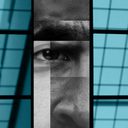
Robert Roberson with daughter Nikki. Courtesy of the Roberson family.
In an op-ed for the Wall Street Journal, novelist John Grisham recounts the flawed science that led to the conviction of Robert Roberson (pictured, with his daughter Nikki) and the inadequate legal process that has maintained that conviction. Mr. Roberson was convicted and sentenced to death for the 2002 death of his 2‑year-old daughter Nikki. His conviction relied on a theory of “shaken baby syndrome” that has since been discredited. After a hearing ordered by the Texas Court of Criminal Appeals, a Texas judge rubberstamped a brief submitted by Anderson County prosecutors, ignoring exhaustive and unrebutted scientific evidence and upholding Mr. Roberson’s conviction.
Mr. Grisham explains that, although the shaken baby hypothesis has been used to convict “countless caregivers,” “Mr. Roberson could be the first to be executed.” He recounts the circumstances leading up to Nikki’s death – “chronic and severe middle-ear infections,” “a high fever and undiagnosed pneumonia,” and a fall out of bed the night before her father found her unresponsive and took her to the emergency room. Staff there “didn’t know [Mr. Roberson] was autistic and decided he didn’t show the proper emotions given the dire situation.” When Nikki died a few days later, a doctor identified the triad of symptoms that were assumed to be indicative of shaken baby syndrome – “brain bleeding, brain swelling and bleeding in the eyes.”
What Mr. Grisham calls that doctor’s “rush to judgment,” paired with a nurse’s unproven speculation that Nikki had been sexually abused, led a jury to convict Mr. Roberson and sentence him to death. But in the 20 years since Mr. Roberson’s trial, medical science has evolved, and even Dr. Norman Guthkelch, the doctor who initially proposed the shaken baby syndrome hypothesis, has disavowed it. In 2012, Dr. Guthkelch argued for a review of shaken baby convictions, saying, “I am frankly quite disturbed that what I intended as a friendly suggestion for avoiding injury to children has become an excuse for imprisoning innocent people. We went badly off the rails.”
In 2016, just five days before Mr. Roberson was scheduled to be executed, the Texas Court of Criminal Appeals ordered a hearing in his case. The trial court heard ten days of evidence, including testimony from six experts “who showed that the outdated version of shaken-baby syndrome used at his trial has been discredited and that Nikki died as a result of her undiagnosed pneumonia, medications and accidental fall.” According to Mr. Grisham, at that hearing, Mr. Roberson’s legal team “produced unrebutted evidence that no homicide had in fact occurred.” The state replied by submitting “a 17-page brief that hardly touched on the new science — instead rehashing outdated evidence and theories from the original trial in 2003.” Judge Deborah Evans “rubber-stamped it, following the prosecution’s lead in ignoring most of the new expert testimony and all of the scientific studies showing a change in understanding of shaken-baby syndrome.”
Mr. Grisham concludes with a call to review cases like Mr. Roberson’s, and to “demand more from judges than a copy-and-paste job that entirely ignores changes in the scientific understanding of a case, especially when a life is on the line.”
Mr. Roberson has a petition for a writ of certiorari pending before the U.S. Supreme Court. On June 15, 2023, five amicus briefs were filed on his behalf by scientists, judges, and innocence organizations.
John Grisham, Texas May Execute a Man Based on a Scrapped Medical Theory, Wall Street Journal, September 7, 2023

